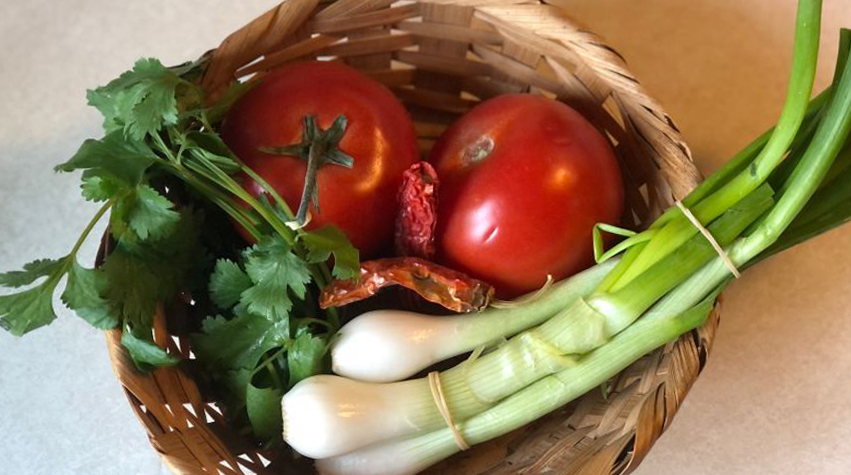
The secret to salsa from scratch is using the freshest ingredients straight from a homegrown garden. While planting seeds in the ground gives you the best opportunity to pick custom cultivars for your personal preferences, most of the ingredients can also be grown in containers. Even those without a lot of outdoor space can grow salsa ingredients on a patio or porch.
Tomatoes, onions, peppers, garlic and cilantro are key components of a salsa garden. Other plants include oregano, scallions and cucumbers. Vegetables and herbs should be planted according to the local hardiness zone and fertilizing throughout the growing season. Plant in full sun and well-drained soil, and water at the base of the plant to avoid diseases.
- Tomatoes are the base ingredient, and their variety has an impact on taste and consistency. For a thicker salsa, use paste tomatoes such as “Roma,” “Marzano,” “Veeroma” and “Viva Italia.” For a thinner, watery salsa, use slicing varieties such as “Celebrity,” “Better Boy,” “Big Beef” and “Floramerica.” Tomatillos, also called Mexican ground cherries or Mexican husk tomatoes, are often used as a thickening agent in salsa or as the basis for a salsa verde.
- Peppers are tender, warm-season vegetables that need higher temperatures than tomatoes and will determine the degree of heat in a salsa. Select varieties based on shape, color and disease resistance. Peppers can be picked at any size but are usually harvested when the fruit is mature. Always wear plastic or rubber gloves when handling or picking hot varieties!
- Onions are a cool-season vegetable. We advise planting long-day varieties in northern Illinois and short-day varieties in southern Illinois. There is also a newer day-neutral onion, which is between a short-day and long-day onion.
- Garlic is a perennial that should be planted in the fall and divided annually to get good-sized bulbs. Plant individual cloves in well-drained soil for the largest bulbs. Hardneck varieties have larger cloves than the softneck varieties and are easier to peel. I recommend the hardneck varieties “Spanish Roja,” “Carpathian,” and “Georgian Crystal.”
- Cilantro is an herb often used to flavor salsas. Pick cilantro before the plant flowers and plant it in succession to maintain a steady supply through the season. PM
Andrew Holsinger is a horticulture educator with the University of Illinois Extension.
- Log in to post comments

